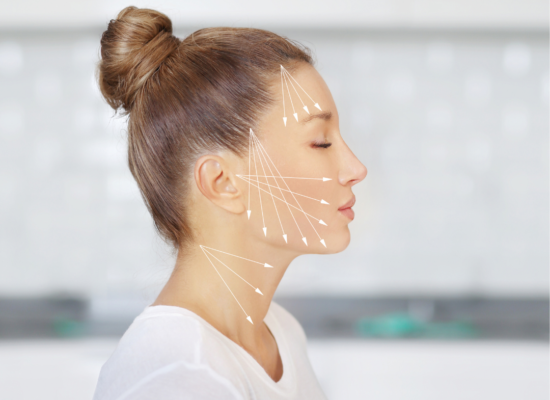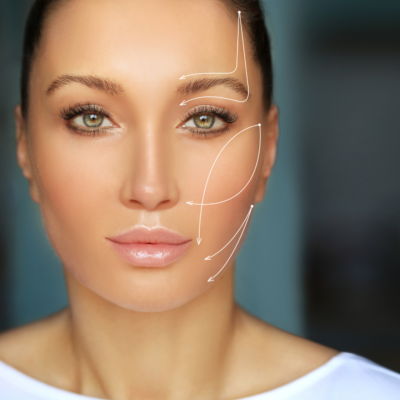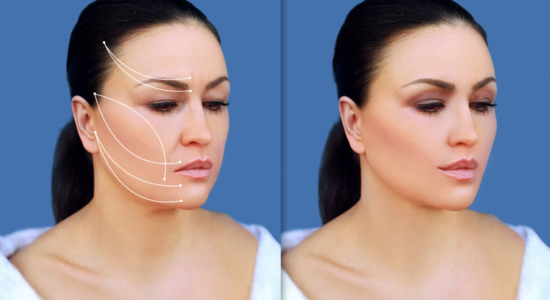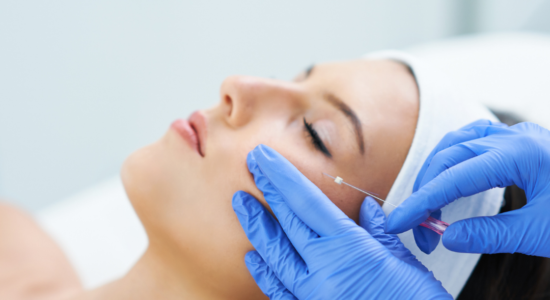
What are PDO Threads?
PDO stands for Polydioxanone and this refers to the material used to make the threads used in the lifting procedure. The PDO threads offer a number of specific benefits:
- Ultra-fine threads are naturally broken down within the body over 6-8 months, although the results naturally ‘wear off’ over around 18 months
- Transparent material invisible within the skin
- Threads have no cones, thus no tissue damage
- Excellent safety record – the same thread used in cardiac and other surgical sutures
- The principle behind PDO thread lifting is not simply about pulling the skin into a different position, but also to stimulate the body’s natural reaction to a ‘foreign body’ – which is to produce collagen and improve blood circulation, contracting the tissue.
Benefits of PDO Thread Lift
- Droopy Eyebrows
- Sagging Eyelid or Cat Eye Look
- Rejuvenating and Lifting Mid-face
- Rhino Nose
- Low or Blunt Nasal Tip
- Softening The Nasolabial Folds
- Sagging Jowls
- Minimising Double Chin or Neck
- Sagging and Wrinkled Neck
PDO Threads can treat:
- Naturally improves skin elasticity and texture
- Reduces wrinkles
- Brightens skin tone
- Produces more defined facial contours
- Rejuvenating and lifting effect
- Covers prominent forehead veins
- Redefines facial features
- Addresses sagging/loose skin


How do PDO Thread Lifts Work?
PDO threads are inserted in your skin by a cannula or needle. Once the thread reaches its end point, it will be released and the cannula will be removed. The practitioner might repeat the process multiple times to achieve the right lift, which means anywhere from one to fifteen threads might be inserted.
The threads will then be smoothed with a gentle massage to prevent any dimpling.

During the Procedure:
Local anaesthetics (lignocaine with adrenaline) is injected to numb the treatment areas. Fine, absorbable polydioxanone threads (similar to those used in medical suturing) are inserted into the subcutaneous layer of the skin using small needles. A combination of large sized, barbed threads called cogs and smaller threads called monofilaments are used. For a midface lift PDO cog threads are inserted in the jawline and cheeks, in the forehead for an eye brow lift and in the neck for a neck lift.
WHEN IS PDO THREAD CONTOURING NOT ADVISED?
PDO thread contouring is contraindicated in the following instances:
1. Active acne or skin infection.
2. Keloid predisposition.
3. Auto-immune diseases: scleroderma, sarcoidosis, amyloidosis, etc.
4. Anti-coagulant medication: coumarin & heparin (aspirin).
5. Haemophilia.
6. Pregnancy, IVF.
7. Malignancy/Chemotherapy.
8. Hepatitis B & C, HIV.
9. History of bacterial endocarditis: Such clients need antibiotic prophylaxis for this procedure.
10. Existing systemic infection.
11. Porphyria.
12. History of Herpes simplex labialis.
13. Body dysmorphic disorder,
14. Unrealistic patient expectations.
After the Procedure:
1. Antibiotic cream will be applied at the sites of thread insertion.
2. Ice packs may be applied to reduce the swelling and bruising.
3. Clients are advised to refrain from chewing or drinking hot liquids until their face has regained full sensation.
4. Clients are advised not to wash their face on the same day following the procedure. Gentle cleansing is permitted the next day.
5. Avoid opening the mouth wide and avoid routine dental treatment for at least 4 weeks post treatment.
6. Avoid taking aspirin for seven days after the treatment.
7. Avoid extreme temperatures (sauna, etc.) for seven days after the treatment.
8. Avoid having other cosmetic treatments for 14 days after the treatment.
Any discomfort following the procedure can be managed effectively by taking oral paracetamol two to three times daily after meals.

